Tempo metereologico
In questa lezione verranno introdotti la maggior parte dei vocaboli per poter parlare del tempo atmosferico. Per chiedere "che tempo fa?" in inglese si usa la seguente espressione:
What's the weather like? [tooltip]Che tempo fa?[/tooltip]
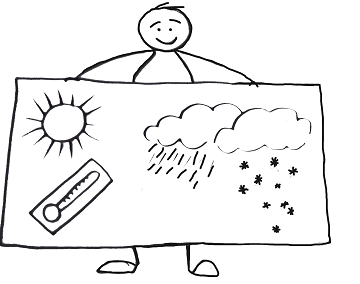
Risposte riguardanti il tempo atmosferico:
Per rispondere si usa
It is / It's + aggettivo che indica il tempo atmosferico
Per esempio:
It's cold [tooltip]Fa freddo[/tooltip]
It's foggy [tooltip]C'è la nebbia[/tooltip]
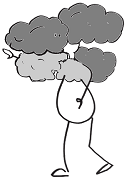
Alcuni aggettivi che descrivono il meteo sono:
hot [tooltip]caldo/torrido/rovente/bollente[/tooltip]
warm [tooltip]caldo[/tooltip]

cold [tooltip]freddo[/tooltip]
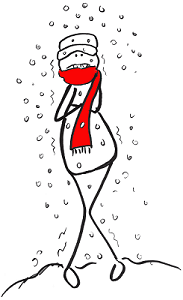
sunny/fair [tooltip]soleggiato/solare[/tooltip]
foggy [tooltip]nebbioso[/tooltip]
windy [tooltip]ventoso[/tooltip]
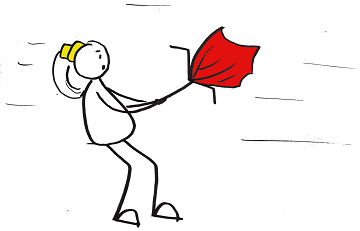
cloudy [tooltip]nuvoloso[/tooltip]
changeable [tooltip]variabile[/tooltip]
rainy/raining [tooltip]piovoso[/tooltip]
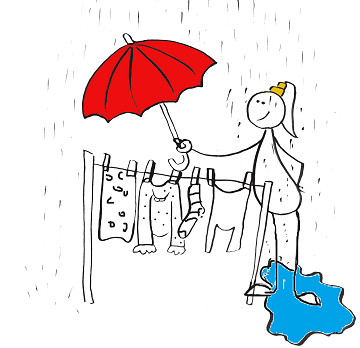
drizzly/drizzling [tooltip]piovigginoso[/tooltip]
pouring [tooltip]scrosciante/torrenziale[/tooltip]
wet [tooltip]umido[/tooltip]
thundery/thundering [tooltip]temporalesco[/tooltip]
snowy/snowing [tooltip]nevoso[/tooltip]
freezing [tooltip]gelido[/tooltip]
Previsioni del tempo
Per invece domandare come sarà il tempo nei prossimi giorni possiamo utilizzare queste frasi.
per domandare:
what’s the forecast? [tooltip]come sono le previsioni?[/tooltip]
what’s the forecast like? [tooltip]come sono le previsioni?[/tooltip]
per rispondere:
it’s forecast to rain [tooltip]è prevista pioggia[/tooltip]
it’s going to freeze tonight [tooltip]stanotte gelerà[/tooltip]
it looks like rain [tooltip]sembra che stia per piovere[/tooltip]
it looks like it’s going to rain [tooltip]sembra che stia per piovere[/tooltip]
we’re expecting a thunderstorm [tooltip]è previsto un temporale[/tooltip]
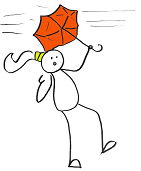
it’s supposed to clear up later [tooltip]dovrebbe rasserenarsi dopo[/tooltip]
Ancora espressioni sul tempo
Possiamo ancora esprimere in modo più articolato il tempo atmosferico, con queste espressioni:
una bella giornata
the weather’s fine [tooltip]il tempo è bello[/tooltip]
the sun’s shining [tooltip]il sole splende[/tooltip]
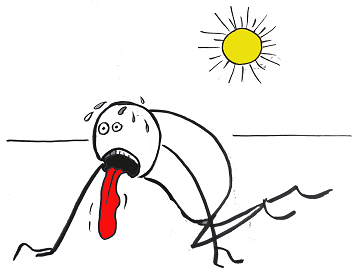
what a nice day [tooltip]che bella giornata[/tooltip]
what a beautiful day [tooltip]che stupenda giornata[/tooltip]
it’s not a very nice day [tooltip]non è una gran bella giornata[/tooltip]
una brutta giornata
what a terrible day! [tooltip]che brutta giornata![/tooltip]
what miserable weather! [tooltip]che tempaccio![/tooltip]
it’s starting to rain [tooltip]sta cominciando a piovere[/tooltip]
it’s stopped raining [tooltip]ha smesso di piovere[/tooltip]
it’s pouring with rain [tooltip]sta piovendo forte[/tooltip]
la famosissima:
it’s raining cats and dogs [tooltip]piove a catinelle[/tooltip]
con il meteo variabile
there’s not a cloud in the sky [tooltip]non c’è una nuvola in cielo[/tooltip]
the sky’s overcast [tooltip]il cielo è coperto[/tooltip]
it’s clearing up [tooltip]si sta schiarendo[/tooltip]
the sun’s come out [tooltip]è spuntato il sole[/tooltip]
the sun’s just gone in [tooltip]è sparito il sole[/tooltip]
there’s a strong wind [tooltip]c’è un forte vento[/tooltip]
the wind’s dropped [tooltip]il vento è diminuito[/tooltip]
durante un temporale
that sounds like thunder [tooltip]sembrava un tuono[/tooltip]
that’s lightning [tooltip]questo è un fulmine[/tooltip]
In quasi tutti i precendeti esempi abbiamo utilizzato il simple present, ovviamente però tutte le espressioni possono essere coniugate per esprimere passato/presente/futuro.
Coniugando il verbo "To be" in maniera diversa “What’s the weather like?” diventa: